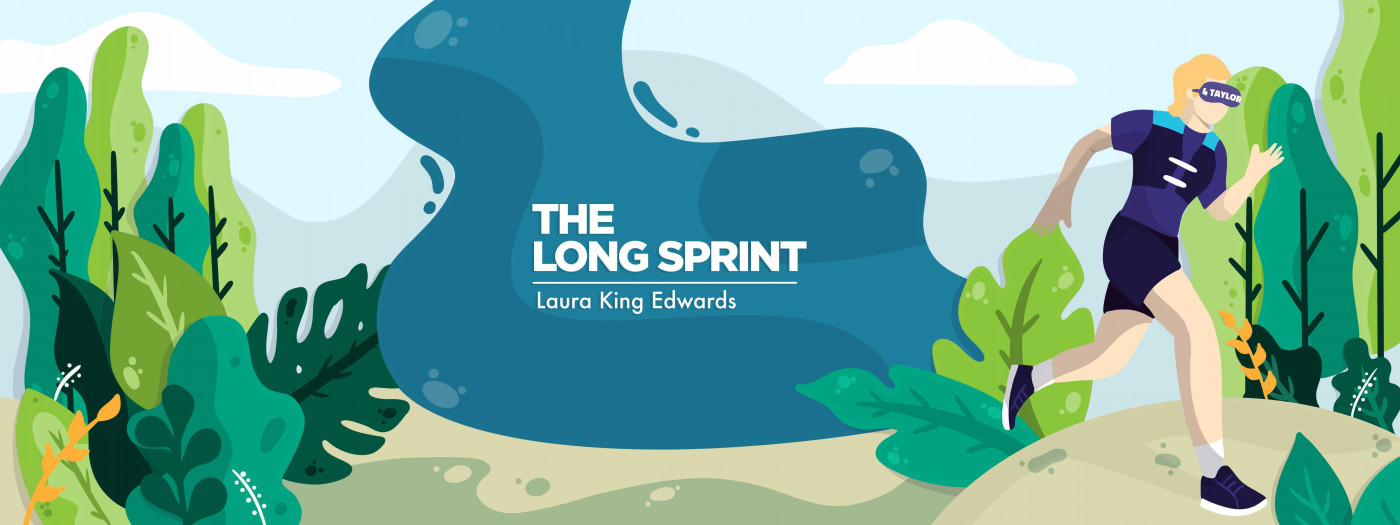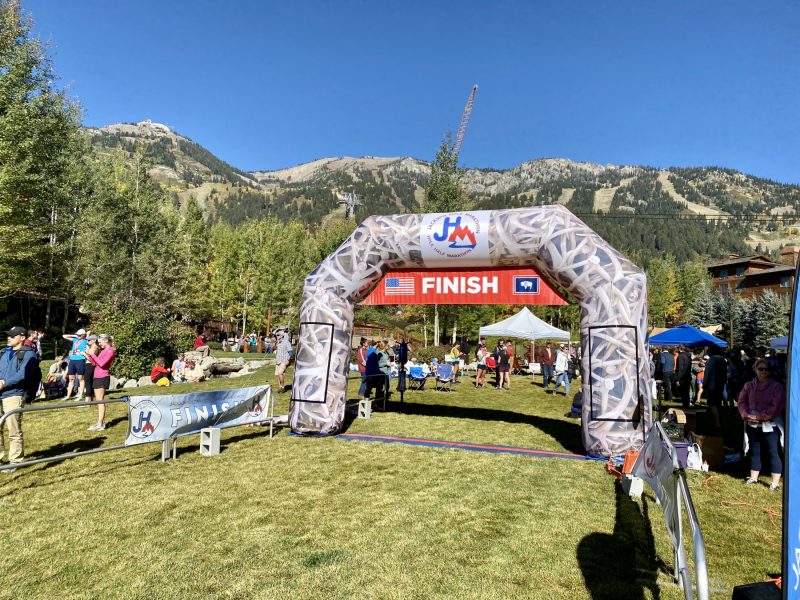Reaching for Life Atop the Great Divide
Written by |

On a cool morning in Wyoming’s Teton Range late last month, I laced up a pair of dusty, well-worn boots and ventured into a glacier-carved gorge called Death Canyon. Having left my 3-year-old son with my parents at our cabin in Jackson, I’d set my heart on attempting the toughest, longest hike since a 2017 trip to Glacier National Park, one baby and many ankle injuries ago.
My left ankle is on the block, with multiple surgeries — including a reconstruction — scheduled for early January. Its current shoddy state didn’t stop me from running the Jackson Hole Half Marathon on Sept. 25, marking the halfway point in my quest to run a race in all 50 states.

The finish line at the Jackson Hole Half Marathon in Wyoming, which columnist Laura King Edwards ran in memory of her sister, Taylor King, who died of Batten disease in 2018. (Courtesy of Laura King Edwards)
Amazingly, the ankle also persevered through Death Canyon. The 16.3-mile trail includes 5,100 feet of elevation gain, switchbacking up the side of the canyon before serving up stunning views of the Teton Range and Alaska Basin. The hike is fantastic on its own merit; it makes my short list of all-time favorites, even though I’ve hiked extensively in well over a third of the national parks in the U.S.
Still, I wasn’t prepared for the elation I felt upon reaching the divide. In that moment, emotions that had built up over three years tumbled out of me and into the canyon beneath where I stood. The date was Sept. 28, just two days after the three-year anniversary of my sister Taylor’s death following a long battle with the CLN1 form of Batten disease.
As the wind whipped through my short hair and too-thin shirt, I felt an unexpected release from the struggle that had lodged deep in my bones — of losing my only sister to a horrid disease six short days after I became a mother. It was the finality of a destiny I’d already understood for years: No matter how much progress we made, it wouldn’t save Taylor.

Columnist Laura King Edwards stops for a selfie during a hike of Death Canyon, which she did after completing the Jackson Hole Half Marathon in memory of her sister, Taylor King, who died in 2018. (Courtesy of Laura King Edwards)
I could have cried, but instead, I found myself smiling, quite literally ear to ear. I stood high above the valley floor and I thought about how the gene therapy research Taylor’s Tale funded will culminate in a Taysha Gene Therapies trial for CLN1 disease within months. I thought about how the care guidelines we catalyzed and published in Pediatric Neurology this year will help families like mine find better quality life, and maybe a longer life for those with Batten disease. I thought about how 21 states now have rare disease advisory councils, following the adoption of North Carolina’s statute in 2015 that’s known as Taylor’s Law.
I took one last look at the world from 10,800 feet and then I started down the mountain with plenty of reasons to keep putting one foot in front of the other. And as the canyon awash with the fiery colors of fall swallowed me whole, I remembered who my sister was. I reflected on how she lived, not how she died. I reaffirmed my responsibility to make the best of the days I receive.
I kept going.
***
Note: Batten Disease News is strictly a news and information website about the disease. It does not provide medical advice, diagnosis, or treatment. This content is not intended to be a substitute for professional medical advice, diagnosis, or treatment. Always seek the advice of your physician or other qualified health provider with any questions you may have regarding a medical condition. Never disregard professional medical advice or delay in seeking it because of something you have read on this website. The opinions expressed in this column are not those of Batten Disease News or its parent company, Bionews, and are intended to spark discussion about issues pertaining to Batten disease.






Leave a comment
Fill in the required fields to post. Your email address will not be published.